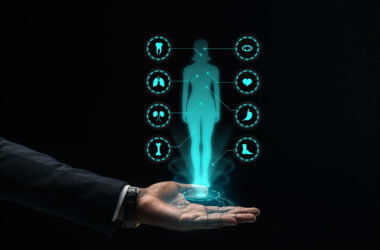Documents and medical records are the heart of the healthcare industry. They hold the information on patient diagnosis, treatments, and follow-up procedures. Physicians may require the patient’s medical records at any moment to prescribe medication.
However, managing and writing these records is a daunting task. Healthcare professionals need a system to organize relevant patient records where medical records summary stands as brilliant support. In this blog, we’ll show you how to summarize medical records quickly using medical transcription software.
What Are Medical Records?
Before we move on to understand the uses and benefits of transcription software for medical records, let’s first clarify what medical records are.
A medical record is a primary source of communication among healthcare professionals. It typically has information about the patient’s health, family, and medical history. Often, this information is used when the patient visits the hospital to check their health progress.
Medical records can range from a few to hundreds of pages in length. Therefore, to summarize medical records is of utmost importance to point out only specific details. Most healthcare industries use medical transcription software to maintain their records.
It is a computer-based system that converts voice recordings into written text, to sum up records quickly and efficiently. This automated medical record summarization ensures accurate and organized information about a patient’s health journey.
Issues With Summarizing Medical Records Manually
Doctors and nurses need real-time access to patients’ medical histories to decide on further treatment plans. Some legal firms and court authorities rely on these records to establish relevant facts and prepare a solid case. However, managing this complex record takes time and effort.
Healthcare professionals might misplace important details, which can later have serious consequences. It needs efficient medical record transcription software to structure all essential information in a manner that helps summarize medical records quickly and accurately.
While medical record summarization is a need of the healthcare industry, It’s crucial to acknowledge the inherent issues that come with this software. Here are some key issues to consider:
- Maintaining Accuracy: Misinterpreting complex medical terminology can introduce errors and distort the intended meaning of the original record.
- Legal Implications: Mistakes or missing details in summaries may be seen as changing evidence, which could cause legal trouble.
- Time Constraints: Individuals without adequate medical knowledge or training may struggle to interpret and summarize complex medical information accurately.
- Technology Reliance: Though technology aids in quickly summarizing medical data, relying solely on automated tools disregards the nuances and subtleties present in medical records. This oversight could result in inaccurate or incomplete summaries.
How to Summarize Medical Records With Transcription Software?
Clarity of information is the key to the success of any medical practice. It is highly important to ensure accuracy and accessibility to summarize medical records for patient. Hence comes medical dictation software that provides tools and resources to the healthcare industry.
It has a built-in voice recognition technology feature, electronic health records, and natural language processing to produce high-quality medical records. It allows medical professionals to easily navigate complex records and extract necessary information.
Let’s go through the steps to use this quick medical record summary generation software:
Step 1 – Gather Information and Prepare
- Review patient demographics, including age, gender, and relevant medical history.
- Identify any significant events or changes in the patient’s condition documented in the record.
Step 2 – Use Medical Transcription Software
- Employ voice recognition technology to transcribe spoken words into text accurately and efficiently.
- Take advantage of auto-population features to fill in standard phrases or commonly used terminology, saving time and ensuring consistency.
Step 3 – Review and Edit
- Double-check numerical data, such as vital signs and laboratory values, for accuracy and consistency.
- Verify that the intended audience appropriately defines and understands all abbreviations and acronyms.
Step 4 – Finalize and Share
- Ensure the summary is readable and understandable for various stakeholders like patients, caregivers, and healthcare professionals.
- Share the final summary securely via approved channels or EHR systems, following privacy regulations.
Step 5 – Collaborate and Verify
- Collaborate with other healthcare professionals to ensure the accuracy and completeness of the patient’s summary.
- Check the summary against more documentation or test results to confirm alignment with the patient’s medical history and current condition.
How AI is Transforming the Healthcare Industry through Medical Transcription Software
Types of Text Summarization with Medical Transcription Software
Choosing the appropriate summarization technique depends on various factors, including the desired level of detail, accuracy, and the specific application. The two types are:
1. Extractive Summarization
This method identifies and extracts key sentences or phrases directly from the original text, essentially creating a cut-and-paste summary. It relies on various techniques to determine sentence importance, such as:
- Frequency – Sentences with higher word frequency are considered more important.
- Position – Sentences at the beginning or end of paragraphs often hold greater significance.
- Named Entities – Sentences containing relevant names, locations, or organizations might be prioritized.
2. Abstractive Summarization
This approach goes beyond mere extraction, aiming to capture the essence and meaning of the original text and generate a new, concise version using its own words. It involves:
- Understanding the Text – Analyzing the document’s structure, semantics, and relationships between concepts.
- Identifying Key Information – Extracting the most important ideas and factual points.
- Paraphrasing and Generating New Sentences – Expressing the extracted information in a concise and coherent manner.
Example of a Medical Records Summary
Here’s an example to help you see how efficient a medical transcription software can be:
Original Medical Record
Patient: John Doe, 55 years old
Date: October 26, 2023
Reason for visit: Chest pain and shortness of breathHistory: Mr. Doe reports experiencing chest pain and shortness of breath for the past two days. The pain is described as a dull ache radiating to the left arm. He also reports feeling lightheaded and experiencing occasional palpitations. He denies any recent illness, injury, or significant lifestyle changes.
Physical examination: Vital signs: BP 140/90 mmHg, HR 100 bpm, RR 20 breaths/minute, SpO2 95%. Physical examination reveals normal heart sounds, clear lungs, and no peripheral edema.
Laboratory tests: Electrocardiogram (ECG) shows normal sinus rhythm with no acute ischemia. Troponin levels are harmful.
Diagnosis: Angina pectoris (stable)
Treatment plan: Aspirin 81mg daily, beta-blocker medication, lifestyle modifications (smoking cessation, exercise program). Schedule a follow-up appointment in 4 weeks.
Summarize Using Medical Transcription Software
Patient: John Doe, 55 years old
Date: October 26, 2023
Reason for visit: Chest pain and shortness of breathSummary: Mr. Doe presented with a two-day history of chest pain radiating to the left arm, along with shortness of breath, lightheadedness, and occasional palpitations. He denied any recent illness, injury, or lifestyle changes.
Physical examination and ECG were normal. Troponin levels were negative. He was diagnosed with stable angina pectoris and prescribed aspirin beta-blocker medication and advised on lifestyle modifications. The follow-up appointment is scheduled for 4 weeks.
Tips for Quick Medical Records Summary Generation
The days are gone when the healthcare industry used to register all details in pen and paper. The EHR system now reconstructs how medical records are maintained.
Medical records summaries avoid personal opinions or interpretations, focusing solely on factual information from the record. Here are some tips for successful rapid medical data summarization:
1. Gather Information and Plan
Review the entire medical record, identifying key sections and the purpose of the summary (e.g., legal case, referral, patient communication).
2. Develop a Structure
Establish a consistent format for your summaries, including sections like demographics, medical history, current condition, and treatment plan.
3. Using the Right Language
Stick to clear medical terms without using complicated jargon or abbreviations, making sure everyone understands.
4. Highlighting Important Details
Focus on the primary information, leaving out anything unnecessary to keep the summary short and sweet.
5. Making the Most of Technology
Take advantage of helpful features in transcription software, like recognizing speech and automatically adding common phrases, to work smarter.
Converse Smartly® – Folio3 AI Transcription Software for Medical Records
“Time is everything,” and Converse Smartly is one application that helps you make the most of it. Converse Smartly is a smart solution for transcription designed to simplify the documentation process for medical professionals.
It uses AI and machine learning algorithms to accurately transcribe audio recordings in real-time, making it an indispensable tool for busy professionals. Folio3 AI offers the latest and best speech recognition software for healthcare to provide a preeminent online transcription tool for the best and most accurate results. Here’s how it helps with medical transcriptions:
- AI-powered speech recognition: Claims high accuracy using AI and machine learning, which could speed up documentation compared to manual typing.
- Keyword identification: Highlights key medical terms that could ease information retrieval and review.
- Speaker detection: If accurate, it could differentiate between doctors, patients, and other participants in recordings, aiding clarity.
- Real-time transcription: May allow for immediate review and editing of notes during consultations or procedures.
Overall, Converse Smartly can save time and effort in creating accurate medical record summaries.
Conclusion
Medical record summarization is an important aspect of efficient healthcare management, that’s exactly why you need a Medical Transcription Software to boost this process by simplifying the task and delivering accurate results quickly.
It facilitates clear and concise communication between healthcare professionals and legal teams. It also minimizes the chances of overlooking crucial details buried within extensive records.
By using the tips and strategies mentioned in this blog, healthcare professionals can ease their burden. It’s not just a software that summarizes documents; it can be a lifesaver for multiple patients by quickly determining relevant points and diseases without any delay.
Frequently Asked Questions (FAQs)
How Does Transcription Software Help in Summarizing Medical Records?
Transcription software assists in summarizing medical records by transcribing audio recordings into text, which can then be used to create concise summaries efficiently.
What Features Should I Look for in Transcription Software for Medical Record Summarization?
When choosing transcription software for medical record summarization, look for features such as voice recognition, medical terminology dictionaries, keyword identification, and customizable templates.
Can Transcription Software Integrate With Existing Electronic Health Record Systems?
Yes, Electronic Health Record (EHR) integration is possible with transcription software, and it can make your healthcare duties easy and smooth.
Is Medical Record Summarization With Transcription Software Accurate?
Medical record summarization with transcription software can be highly accurate, especially when utilizing built-in medical dictionaries and quality control measures.
How Can Transcription Software Enhance the Efficiency of Medical Record Management Workflows?
Transcription software enhances the efficiency of medical record management workflows by automating the transcription process, reducing manual data entry, and improving overall productivity.

Dawood is a digital marketing pro and AI/ML enthusiast. His blogs on Folio3 AI are a blend of marketing and tech brilliance. Dawood’s knack for making AI engaging for users sets his content apart, offering a unique and insightful take on the dynamic intersection of marketing and cutting-edge technology.










